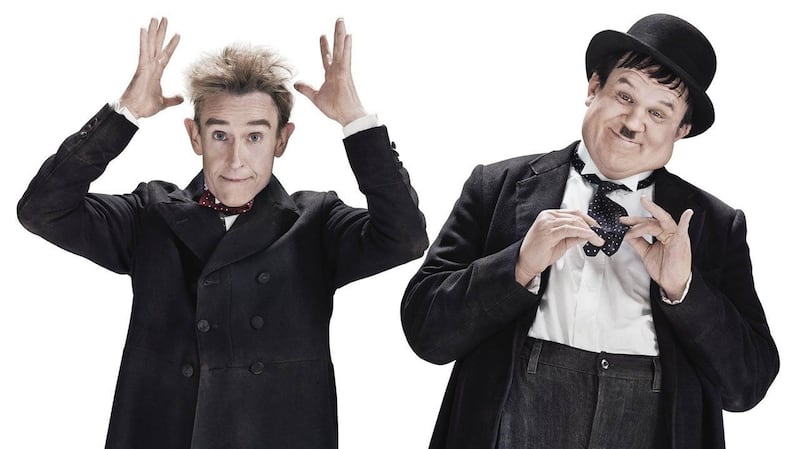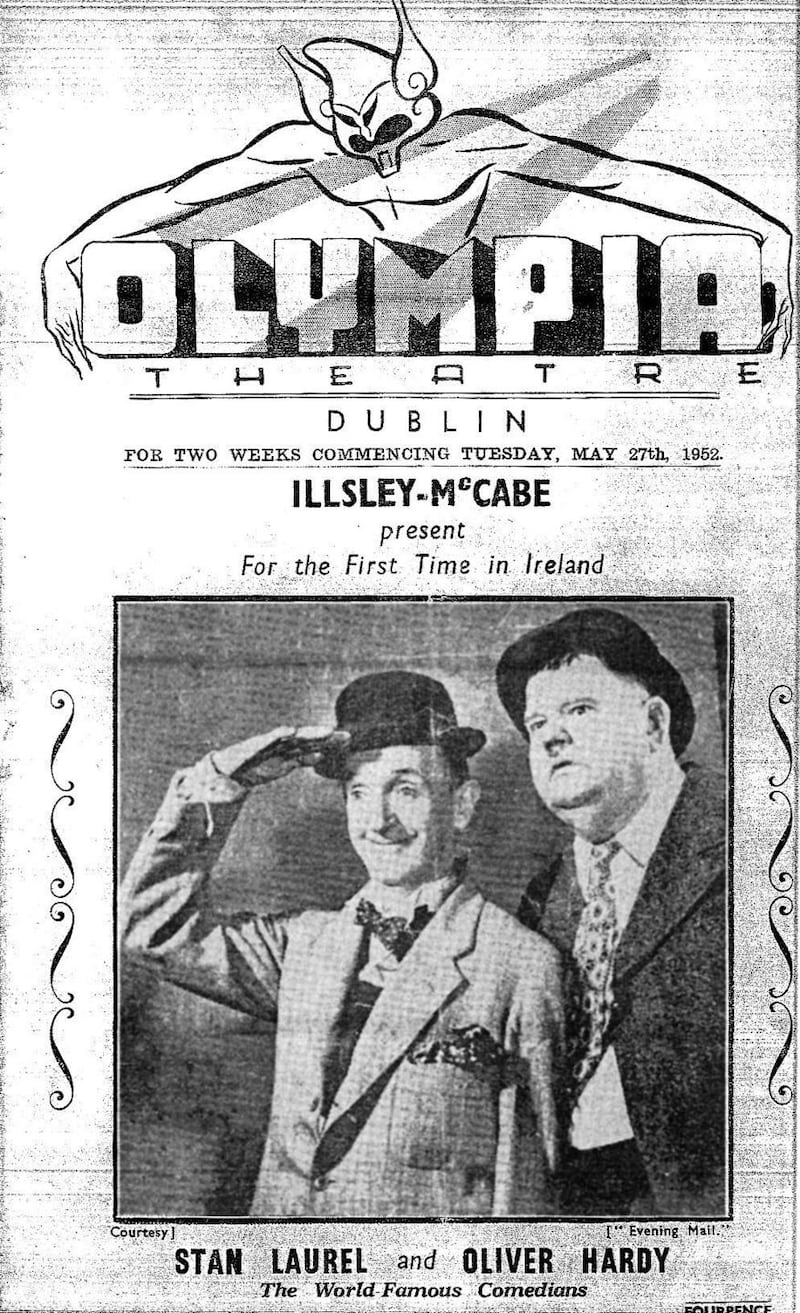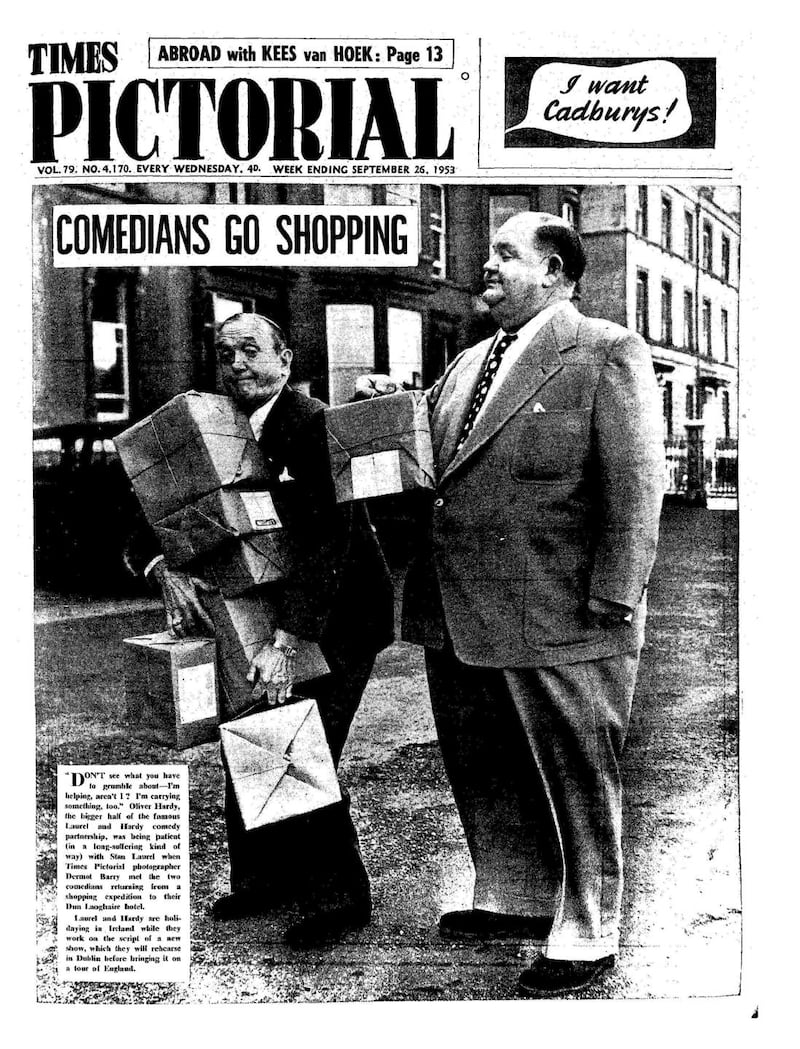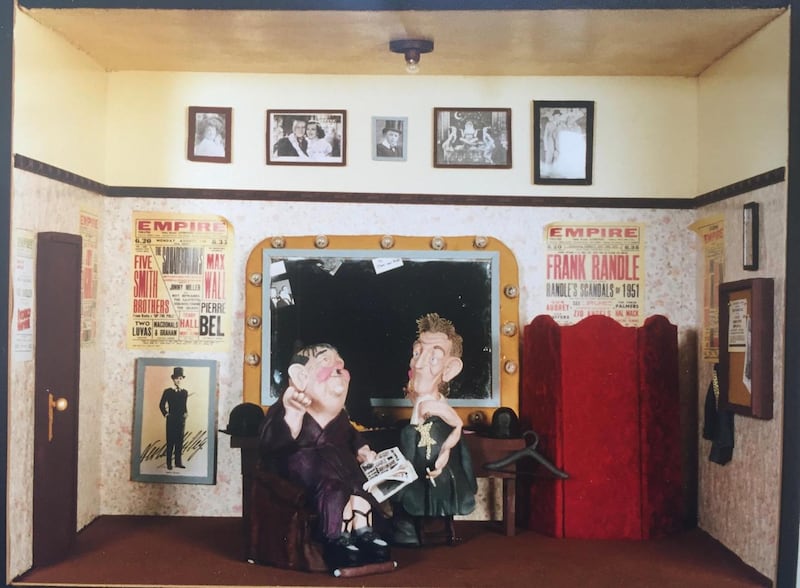When a Laurel and Hardy film came on television my grandad Freddie Elcock would sit me on his knee and point excitedly at the screen. “There he is,” he’d say. “Stan Laurel. My old pal Stan.”
Before the first World War Freddie had worked with Stan – and Charlie Chaplin, too – on music hall bills topped by the impresario Fred Karno’s touring company of slapstick comedians. Chaplin was Karno’s star; a 20-year-old Stan Jefferson (his real name) was second banana and Charlie’s understudy. Freddie wasn’t a member of the troupe, but he performed at local theatres, way down the bill among the wines and spirits, and when a Karno show was touring the British midlands he and his comedy partner, Jack Dutton, would be drafted in to do a knockabout front-cloth parody strongman act while scenery was being changed, then join the others for the riotous finale.
Stan Jefferson – often called Ginger because of his hair – was a great lad, Freddie told me, popular and easygoing, fond of a drink or two and with an eye for the ladies, and together they often rambled around the pubs of Dudley, Freddie’s home town, after a show. Chaplin was nice enough, he said, but had “notions” and held himself aloof from such frivolity.
At the height of their fame Laurel and Hardy rarely socialised together. It was only later, on variety tours, that the comedians got to know each other properly
Charlie and Stan went to the US with Karno and didn't come back. Hollywood soon beckoned. War broke out and Freddie went to fight in France. He came back much changed, and never again set foot on stage. "After what he'd seen he felt he couldn't go on and try to be funny," my nan told me. I was about 10 when he died, and he left me the bayonet he'd fought with in the war and his make-up case, which had compartments for greasepaint sticks and a selection of wigs and other bits and pieces.
From this distance it's hard to appreciate just how potent a phenomenon music hall and variety was in the early years of the last century – the largest mass live entertainment until rock music came along in the 1950s. Every town in Britain and Ireland had a variety theatre, and most cities had two or three. For anyone even slightly skilled, performing was a viable career option.
Stan was born into the business in 1890. His father, AJ Jefferson, was a playwright, actor-manager and, later, lessee of the Metropole in Glasgow, the Theatre Royal in North Shields and other venues, and after a childhood in the Lancashire town of Ulverston, Stan moved with his family to the Tyneside area on the Scottish border.
The little boy spent his time and pocket money making toy theatres and puppet shows. AJ anticipated a career as an actor, and Stan joined his father’s resident company as soon as he was old enough, playing straight roles in melodramas while secretly longing to clown.
He broke away to go solo as Young Stan Jefferson, “He of the Funny Ways”, mimicking music hall surrealist Dan Leno, who also liked bizarre wordplay (you can see this influence in many of the daft exchanges between Laurel and Hardy). He was hired by Karno in 1909 and left Britain for a career in the US three years later, changing his surname because Stan Jefferson had 13 letters and he thought it might be unlucky.

Washed up
Forty years later, Stan Laurel was back in Britain, touring some of the same theatres he had appeared in before the first World War. As film artists, Laurel and Hardy were washed up: their glory days with Roach studios in the 1930s far behind and even the inferior Fox and MGM movies of the 1940s just bad memories.
Aged around 60, they embarked on three very long tours of Britain and Ireland, in 1947, 1952 and 1953-54 – their main source of income during those years. Neither had received a cent in residuals from the old Roach shorts that were constantly playing on American television.
At the height of their fame Laurel and Hardy rarely socialised together. Stan was the creative force, rewriting scripts, making props, working late in the editing suites. Ollie, always known as Babe, was far less driven: he gave it 100 per cent when the cameras were rolling then headed for the golf course or the racetrack with his drinking buddies.
It was only on these later variety tours that the comedians, constantly together on trains, ships and in hotels, really got to know each other properly for the first time and, in the words of their biographer, John McCabe (who knew both personally) “each found a cherished friend”.

The movie
Stan & Ollie explores the 1953-54 tour, though it contains elements of all three. Directed by Jon S. Baird from a screenplay by Jeff Pope, it stars Steve Coogan and John C Reilly, with Shirley Henderson as Ollie's wife, Lucille, and Nina Arianda as Stan's Russian wife Ida.
Some events are elided for dramatic reasons and the chronology changed, but there is little sense in the movie that Stan was returning home, and to theatres where he would have been well known not only from films but in person from recent tours and much-earlier appearances. There is a grain of truth, and some emotional justification, in portraying Laurel and Hardy as semi-forgotten has-beens, I suppose, but contemporary reports show that, as Hollywood royalty, they were received rapturously by cheering crowds in austerity-stricken post-war Britain.
Stan, in particular, had difficulty visiting his family because he was mobbed whenever he set foot outside his hotel.
In Stan & Ollie, on the posters outside the sometimes tatty theatres (in fact they played the Number Ones) only their names appear, giving an impression they were onstage during the whole show. In reality, they performed a 20-minute sketch topping vast bills that included stars of the day such as Elsie and Doris Waters, budding comics like Harry Worth and the usual assortment of singers, jugglers, acrobats and animal acts.
The late ventriloquist Ray Allen told a story that demonstrated Oliver Hardy’s essential sweetness and humility. At the end of each week Hardy, in poor health and at his heaviest, struggled up all the backstage stairs to tiny dressing rooms to obtain the autographs of every artist who had appeared on the bill, no matter how humbly. Alan suggested he might save Hardy the trouble and get the signatures for him. “Oh no,” explained Ollie. “It is I asking the favour.”

Arrival in Cobh
A famous story (in the film but chronologically misplaced) has them docking in Cobh in 1953. Their previous tour had ended only 11 months before and Hardy, as a US citizen, couldn't work in Britain until a full year had elapsed. However, he could perform in Northern Ireland if he entered from the Republic. No advance publicity about their arrival had been released, but the people of Cobh found out anyway and thronged the quayside to greet them. Stan, Ollie and their wives waved back from the deck, and suddenly the town's church bells started ringing out their theme tune, Dance of the Cuckoos. "I looked at Babe and he looked at me and we wept," Stan told McCabe.
They had performed in Ireland before, in 1952, at the Gaiety in Dublin and Belfast Opera House. On the 1953 visit they appeared at Dublin's Olympia Theatre and Stan, who was a diabetic, made several trips to Belfast for medical treatment while they stayed at the Royal Marine Hotel, Dún Laoghaire, for a month. Lucille and Ida enjoyed shopping in Dublin and their husbands were photographed clowning around. "From what I have seen of Dún Laoghaire it seems to be a beautiful spot," Stan told The Irish Times.


Sculpture
There's a coda, again personal, to this story. Years ago I made a series of theatrical dioramas for a Dublin Theatre Festival exhibition. I was thinking of Stan, and his friendship with my grandad, when I did Laurel and Hardy at the Liverpool Empire, 1952 in porcelain. I didn't offer it for sale, and after the show kept it at home.
Graham Linehan spotted the sculpture in our house and seemed very taken with it. A few weeks later his wife, Helen, contacted me from London and said Graham had mentioned it a few times, and how much he would like to have it.
How could I refuse? A deal was struck and the piece shipped off. Graham rang on Christmas Day to say how surprised and delighted he had been by Helen’s gift. And I was delighted, too. My tribute to Freddie’s old pal and his dear partner had found a fitting new home with one of the finest creators of contemporary comedy.
Stephen Dixon is a journalist and artist. Stan & Ollie opens on Friday, January 11th











